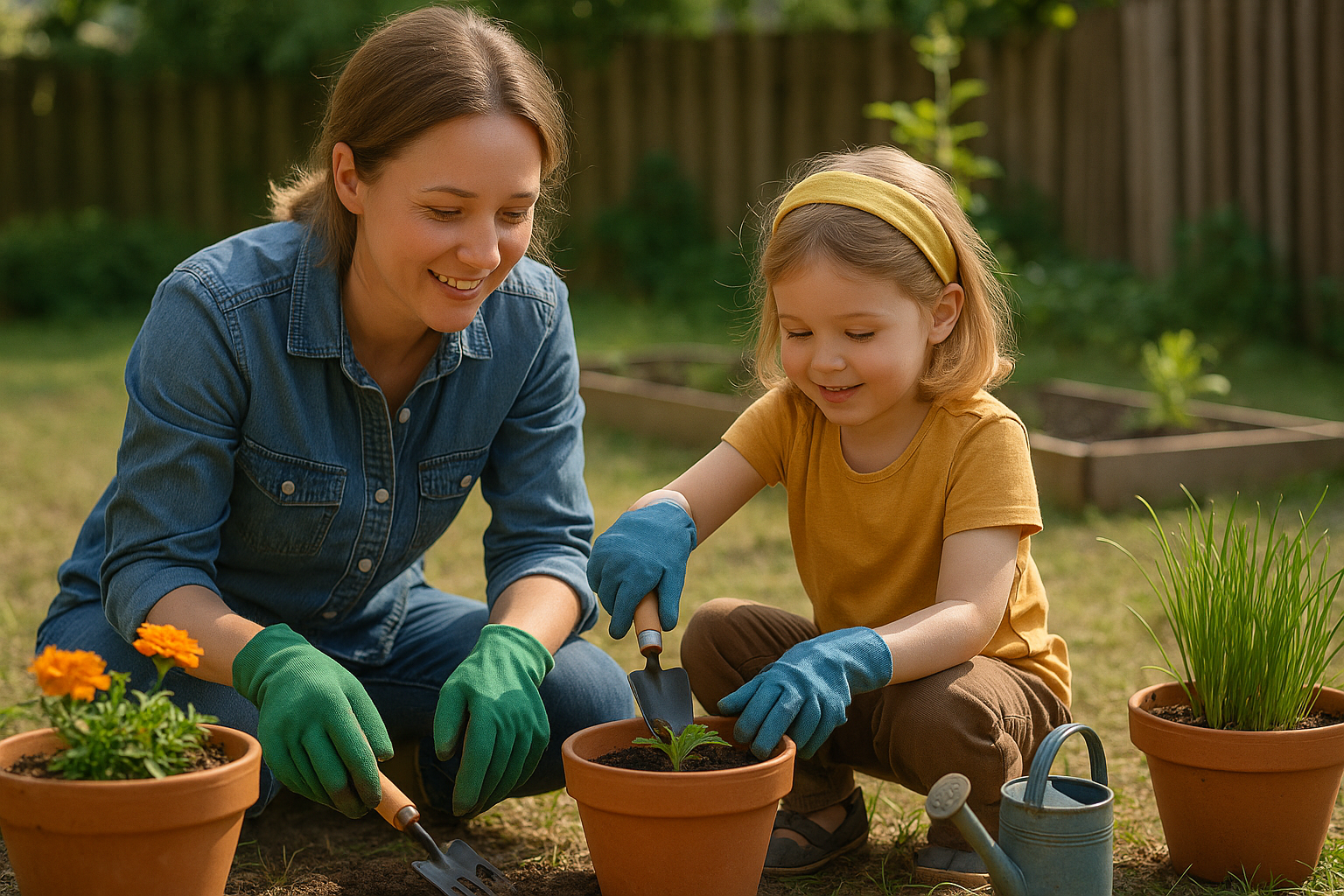Gardening is one of the most enriching and accessible activities you can do with young children at home. It teaches patience, responsibility, and appreciation for nature—while also offering endless learning opportunities in science, math, and emotional development. Whether you have a backyard or just a few pots on a balcony, gardening can spark curiosity and joy in your preschooler.
In this article, you’ll learn how to introduce gardening to your child in a fun, safe, and meaningful way.
Why Gardening Is Great for Preschoolers
Gardening helps children:
- Learn about plant life cycles and nature
- Practice responsibility by caring for living things
- Develop fine motor and gross motor skills
- Build sensory awareness (touch, smell, sight)
- Feel proud of nurturing something and seeing it grow
It’s a peaceful, hands-on activity that encourages focus and care.
1. Start Small and Simple
You don’t need a large space or complicated setup. Start with:
- A small pot with soil on a windowsill
- A container garden on a patio
- Raised beds in a backyard
- Indoor herbs in mason jars
Choose easy-to-grow plants such as:
- Beans
- Sunflowers
- Lettuce
- Basil
- Marigolds
Let your child help choose what to grow. Giving them ownership boosts their motivation and excitement.
2. Use Child-Sized Tools
Small hands need small tools. Invest in (or improvise) safe, lightweight tools like:
- Plastic trowels
- Watering cans
- Rakes
- Gardening gloves
Using real tools gives your child a sense of importance and encourages responsibility.
3. Create a Simple Routine
Teach your child that plants need care every day. Set a short gardening routine, such as:
- Water the plants in the morning
- Check for weeds or bugs
- Gently touch leaves and observe changes
- Talk about how the plant is growing
Even five minutes a day builds a meaningful habit.
4. Keep a Garden Journal
Help your child track their garden’s progress with drawings, photos, or simple notes.
Include:
- What you planted and when
- Daily or weekly observations
- How tall the plants are
- Any flowers, fruits, or changes
This integrates early literacy, science, and memory skills in a natural way.
5. Use Gardening to Teach Responsibility
Caring for a living thing teaches children that their actions matter. Let them be in charge of specific tasks:
- “You are the water helper.”
- “Can you check if the soil feels dry?”
- “Let’s count how many leaves grew this week.”
When a plant thrives, they feel proud of their role in its success.
6. Explore the Science of Plants
Gardening is the perfect way to introduce basic biology.
You can talk about:
- What plants need to live (sunlight, water, soil, air)
- The different parts of a plant (roots, stem, leaves, flower)
- How seeds sprout and grow
Use real-life examples from your garden to make the science come alive.
7. Try Edible Gardening
Growing something they can eat is extra exciting for kids.
Start with:
- Lettuce
- Cherry tomatoes
- Strawberries
- Carrots
- Herbs like mint or basil
Involve your child in harvesting and tasting what they grow. This encourages healthy eating and appreciation for food.
8. Make It Sensory
Gardening is full of textures, smells, and sights.
Sensory experiences include:
- Digging in soil
- Smelling herbs and flowers
- Feeling leaves and petals
- Listening to birds or insects in the garden
Let your child engage all their senses freely—this supports brain development and emotional regulation.
9. Let Them Get Messy
Gardening can be dirty—and that’s okay! Give your child permission to dig, splash, and explore.
Use old clothes and embrace the mess. These sensory moments are not only fun but beneficial to learning.
10. Celebrate Every Step
Even if the plants don’t grow perfectly, every attempt is a chance to learn.
Celebrate:
- The first sprout
- A new bud or flower
- A day of watering or weeding
- Taking care of plants without being reminded
Praise the process, not just the result.
Growing More Than Plants
When children garden, they’re growing more than just flowers or vegetables—they’re cultivating patience, empathy, responsibility, and wonder.
By creating a routine around plants, even on the smallest scale, you give your child a sense of purpose and connection to the world around them. And best of all? You’re doing it together.
So grab a pot, a few seeds, and a little time each day—and watch both your garden and your child thrive.
